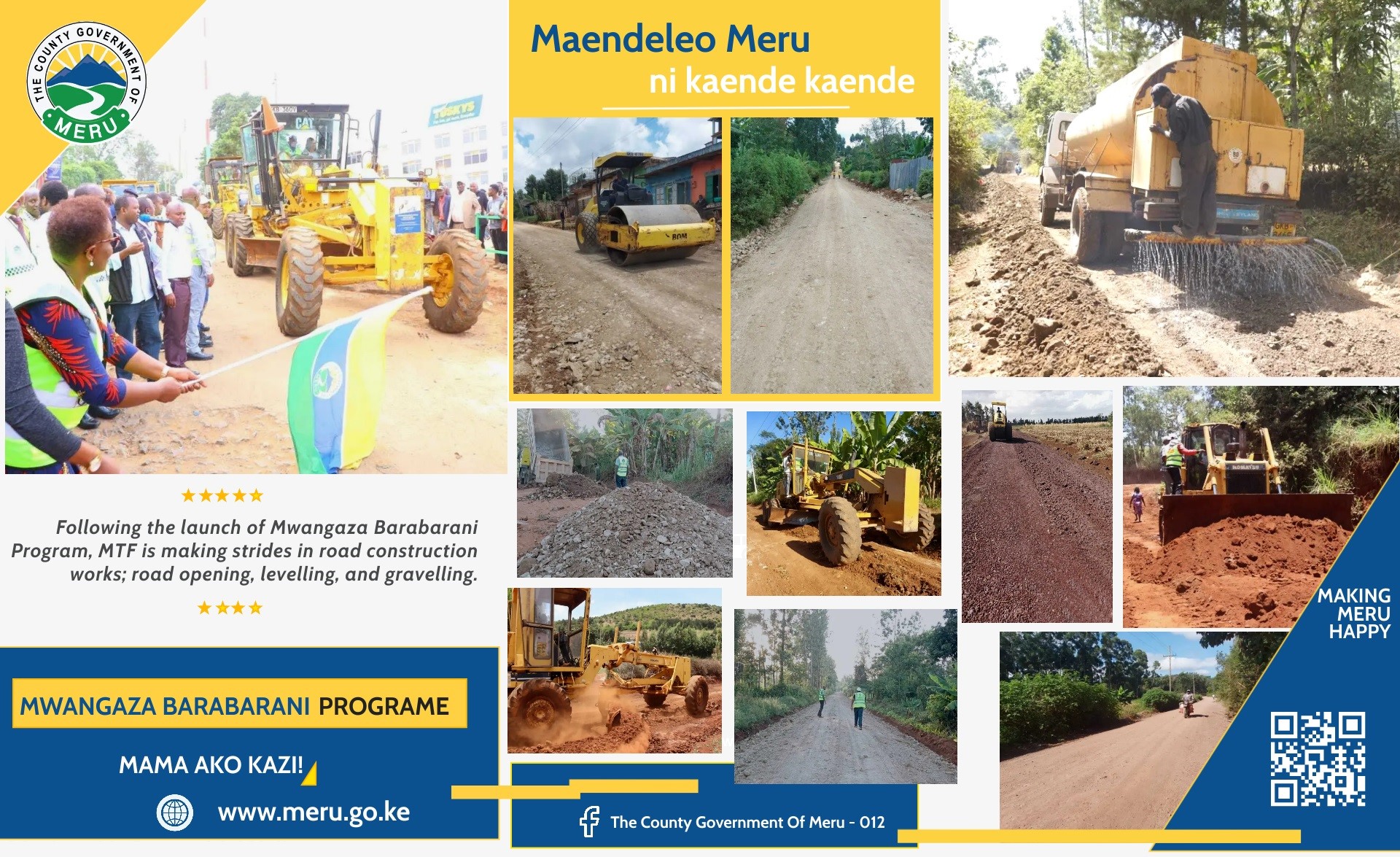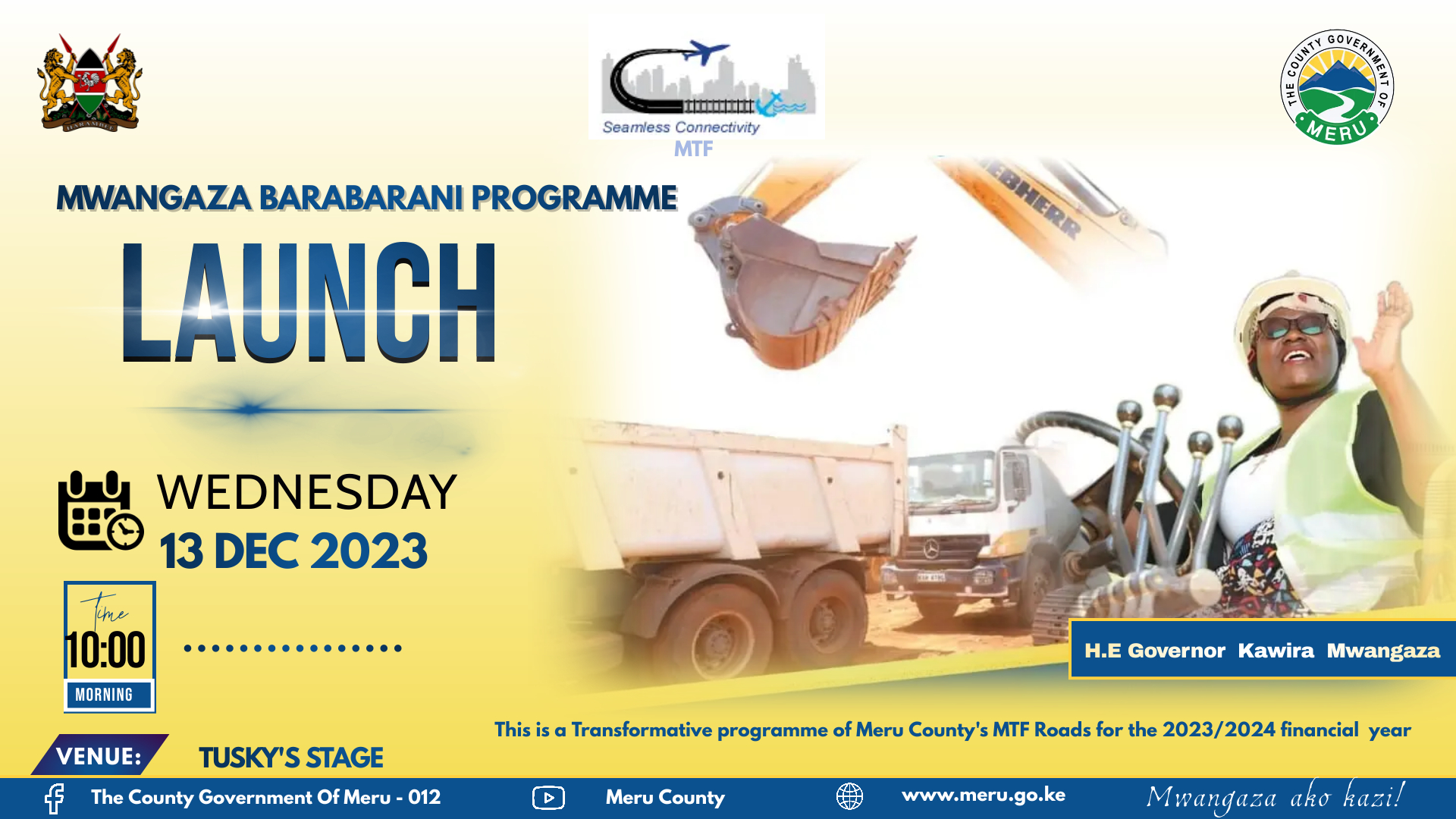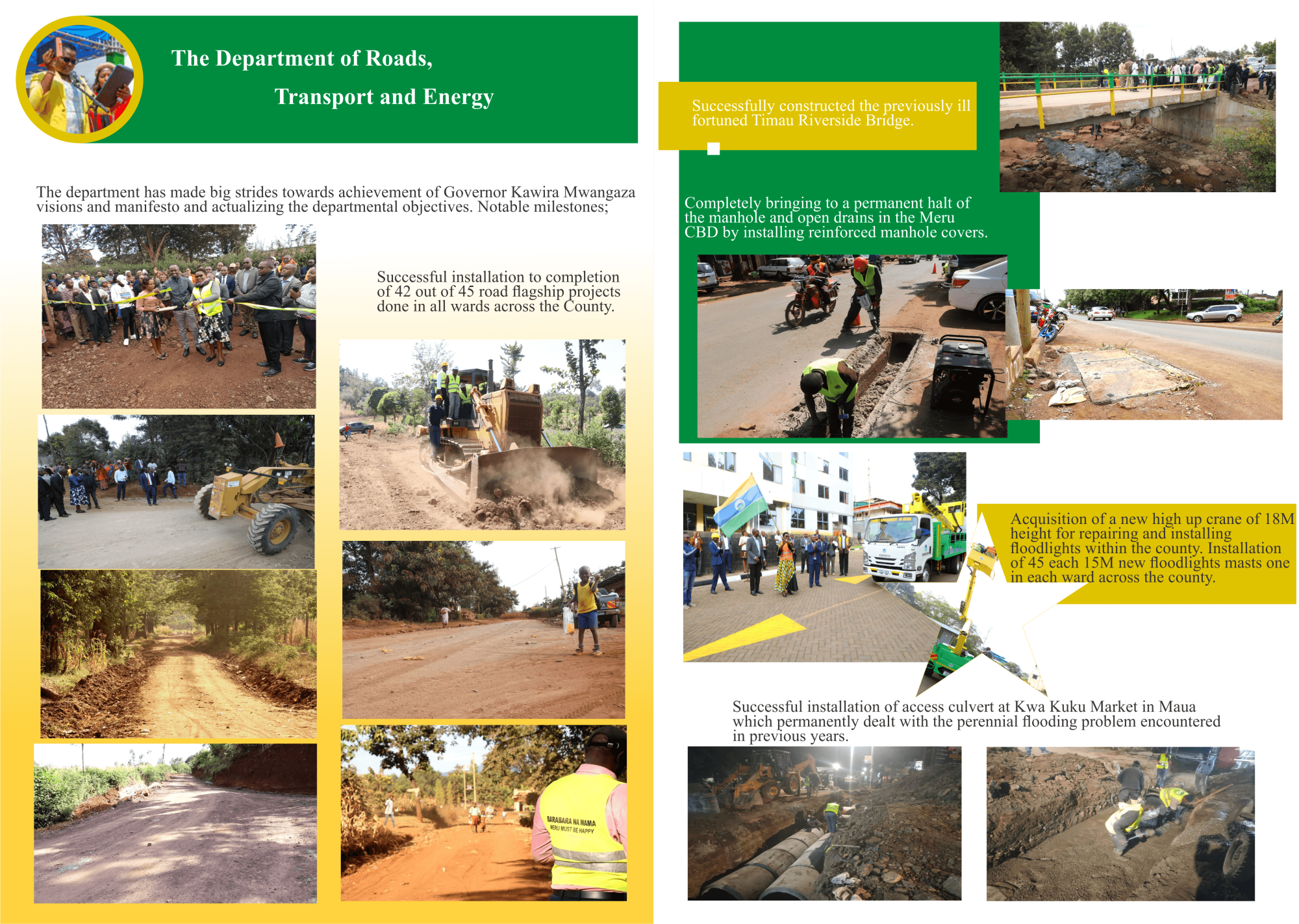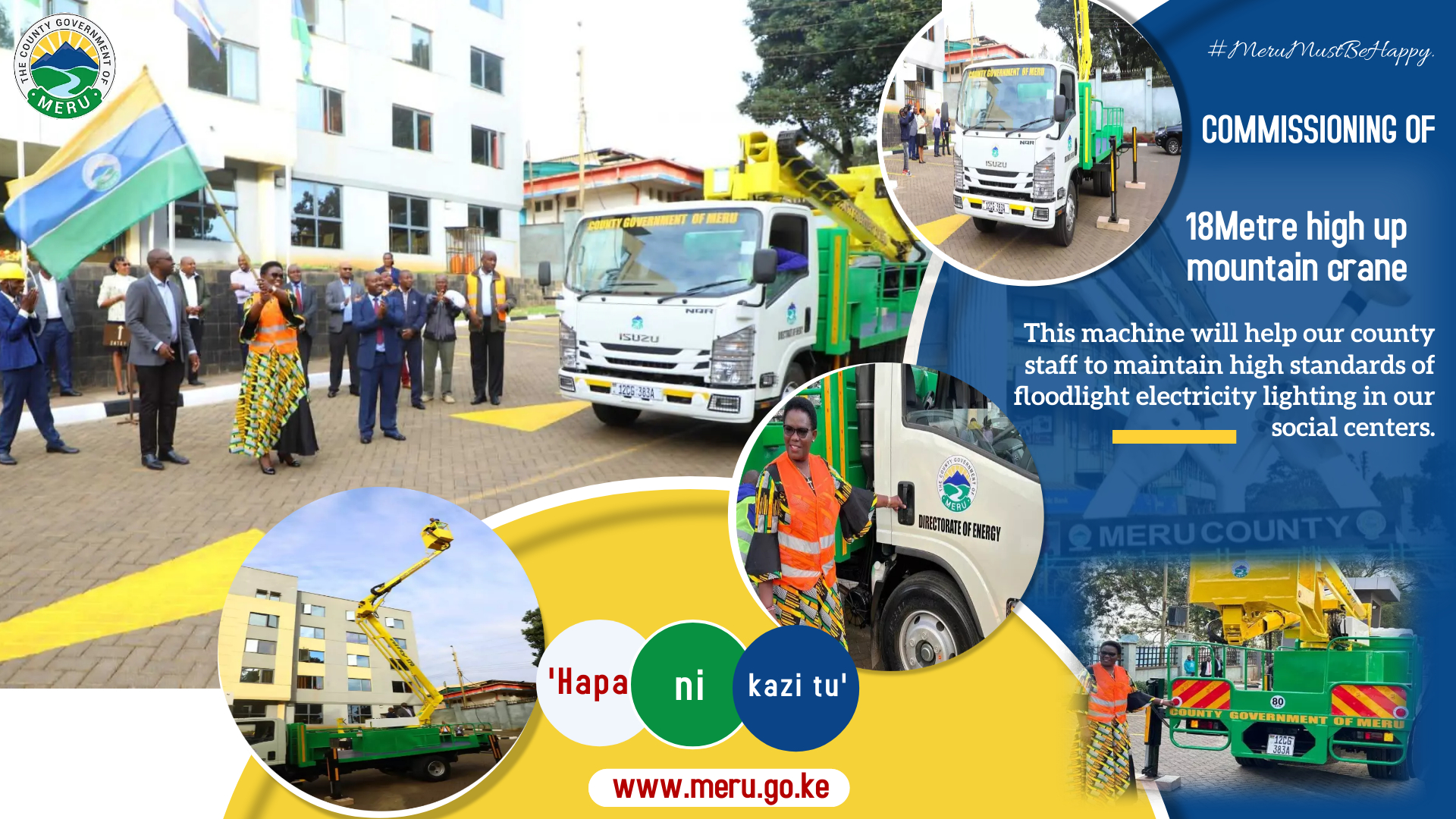Overview,Vision,Mission,Core Values And Strategic Objectives
VISION STATEMENTS FOR THE DIRECTORATES
1. Directorate of Roads; To pioneer in innovative road infrastructure development and maintenance.
2. Directorate of Transport; To prioritize preparedness, ensure convenience, and practice proactive maintenance of all automobiles, while enabling seamless government operations and service delivery.
3. Directorate of Energy; To harness the abundant renewable energy potential in Meru County, with a primary focus on solar, wind, and waste-to-energy sources.
MISSION STATEMENTS FOR THE DIRECTORATES
1. Directorate of Roads; To undertake extensive road maintenance and enhancement projects with the goal of improving all county roads, increasing connectivity by opening new roads, and maintaining and upgrading existing ones, thus ensuring safe and efficient transportation.
2. Directorate Transport; To facilitate fleet operations by making necessary and timely arrangements and providing utmost convenience within the Meru County Government.
3. Directorate of Energy; To provide a reliable energy supply and utilize Meru County's wealth of renewable energy resources with the aim of promoting energy sustainability and creating well-lit public spaces that enhance safety and prosperity within our community.
DEPARTMENTS CORE VALUES
1. Consensus
2. Efficiency
3. Effectiveness
4. Participation
5. Accountability
6. Responsiveness
7. Rule of Law
8. Transparency
9. Ethics
STRATEGIC OBJECTIVES
1. Enhanced Road Network Development: Prioritize the expansion, maintenance, and upgrading of road infrastructure to improve connectivity, accessibility, and reliability across Meru County. This includes focusing on both urban and rural roads to ensure all areas are adequately served.
2. Improved Transport Services: Enhance public transport services, including traffic management and meeting the needs of residents and commuters in Meru County.
3. Sustainable Energy Solutions: Promote and implement sustainable energy practices and sources, such as harnessing solar energy, wind power, and waste-to-energy solutions, to reduce energy costs and environmental impact within Meru County.
DEPARTMENT’S MANDATE
1. Directorate of Roads
I. Road Construction and Expansion: Expansion of existing roads to improve transportation infrastructure and planning, designing, and overseeing the construction of new roads.
II. Road Maintenance: Regular maintenance and repair of county roads to ensure they remain in good condition.
III. Road Rehabilitation: Undertaking rehabilitation projects to restore and upgrade deteriorated roads to their optimal condition.
IV. Road Safety: Installing and maintaining road signs, lane markings, and other traffic control devices for effective road communication.
V. Bridges and Culverts: Constructing and maintaining bridges, culverts, and drainage systems to ensure safe passage of vehicles and prevent flooding.
VI. Grading and Graveling: Grading gravel roads to improve surface quality and maintain accessibility, particularly in rural areas.
VII. Road Surveys and Planning: Conducting road surveys, traffic studies, and road network planning to inform infrastructure development and maintenance decisions.
VIII. Community Engagement: Engaging with local communities, stakeholders, and residents to gather feedback, address concerns, and ensure that road projects align with community needs and expectations.
2. Directorate of Energy
I. Energy Master Plan: Developing and maintaining an Energy Master Plan for Meru County to guide energy-related policies and projects.
II. Installation of Floodlights: Responsible for the installation of floodlights in townships and market centers to enhance safety and security.
III. Maintenance of Floodlights: Ensuring regular maintenance and repair of floodlight systems to keep them in optimal working condition.
IV. Renewable Energy Development: Focusing on harnessing renewable energy sources such as solar, wind, and waste-to-energy to reduce energy costs and promote sustainability.
V. Sustainable Development Projects: Promoting sustainable development by implementing projects aimed at replacing the use of firewood and tin lamps in households, thus reducing environmental impact.
VI. Energy Efficiency Initiatives: Implementing energy efficiency programs to encourage responsible energy consumption practices among residents and businesses.
3. Directorate of Transport
I. Allocation of Stages: This function ensures organized and safe locations for public vehicles to pick up and drop off passengers, contributing to efficient and orderly traffic flow.
II. Control of Vehicles on Streets: This involves monitoring and enforcing compliance with established guidelines and regulations, particularly with respect to public transportation, to enhance road safety and maintain order.
III. Vehicle Procurement: Procuring vehicles required for county government operations, including cars, trucks, and specialized vehicles.
IV. Fleet Maintenance: Implementing regular maintenance schedules to ensure the fleet's vehicles remain in optimal working condition.
V. Fuel Management: Managing fuel procurement, distribution, and monitoring fuel consumption.
VI. Vehicle Replacement: Assessing and determining the need for replacing older vehicles to maintain a modern and efficient fleet.
VII. Vehicle Deployment: Allocating vehicles to various county departments and offices according to operational needs.
VIII. Fleet Data Management: Maintaining comprehensive records of each vehicle, including maintenance history, fuel consumption, and costs.
IX. Traffic Management: Managing and regulating traffic flow, including the installation of traffic lights, pedestrian crossings, and roundabouts.
X. Compliance and Reporting: Ensuring that all county vehicles comply with legal and regulatory requirements, and preparing reports on fleet performance and expenditures for accountability and decision-making purposes.




